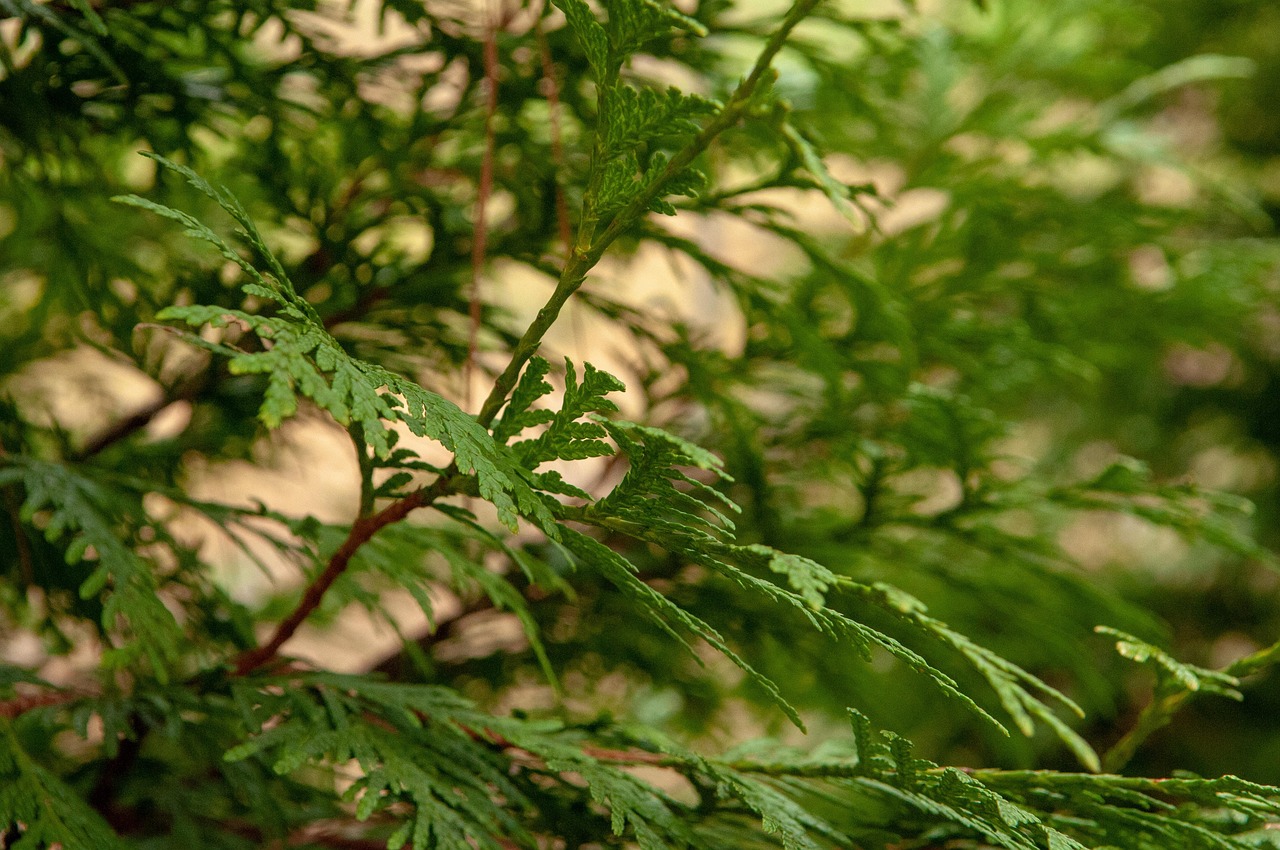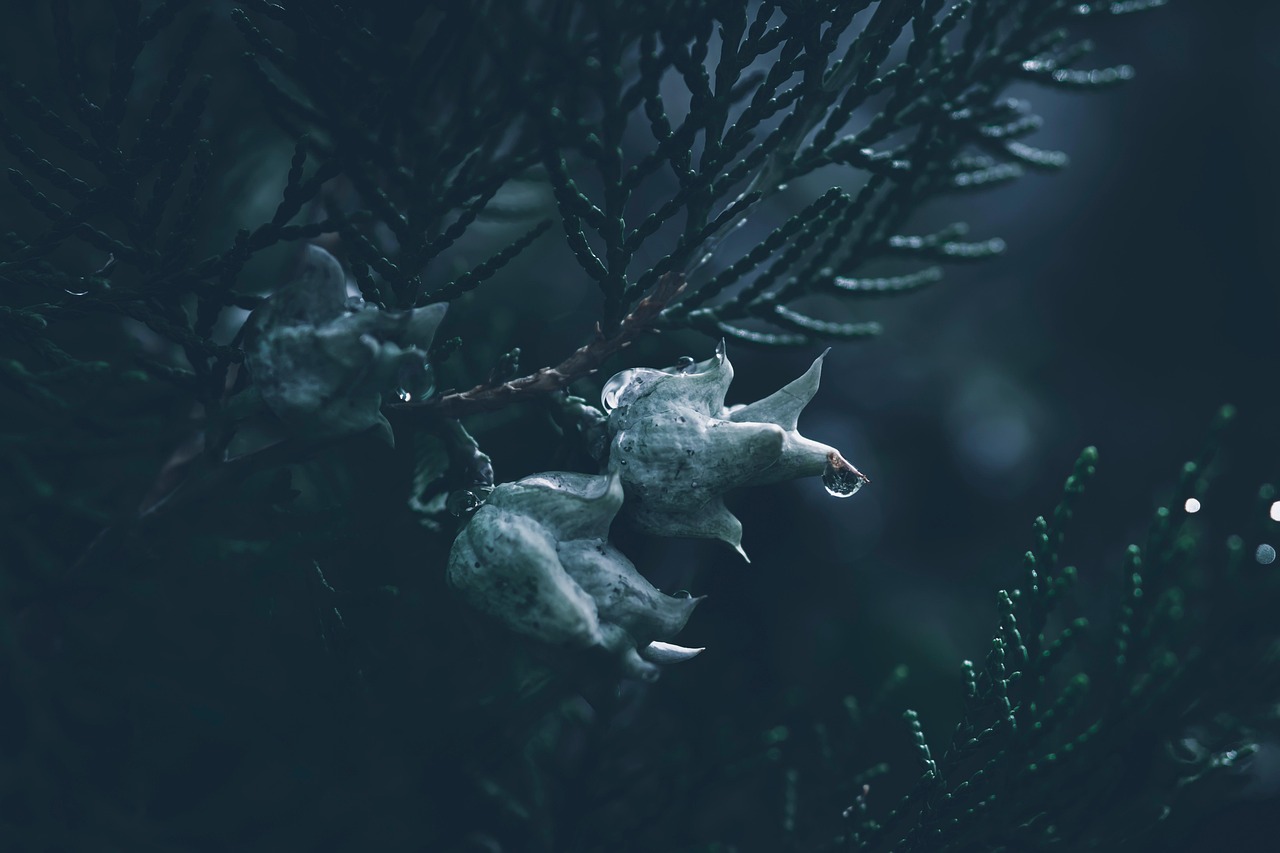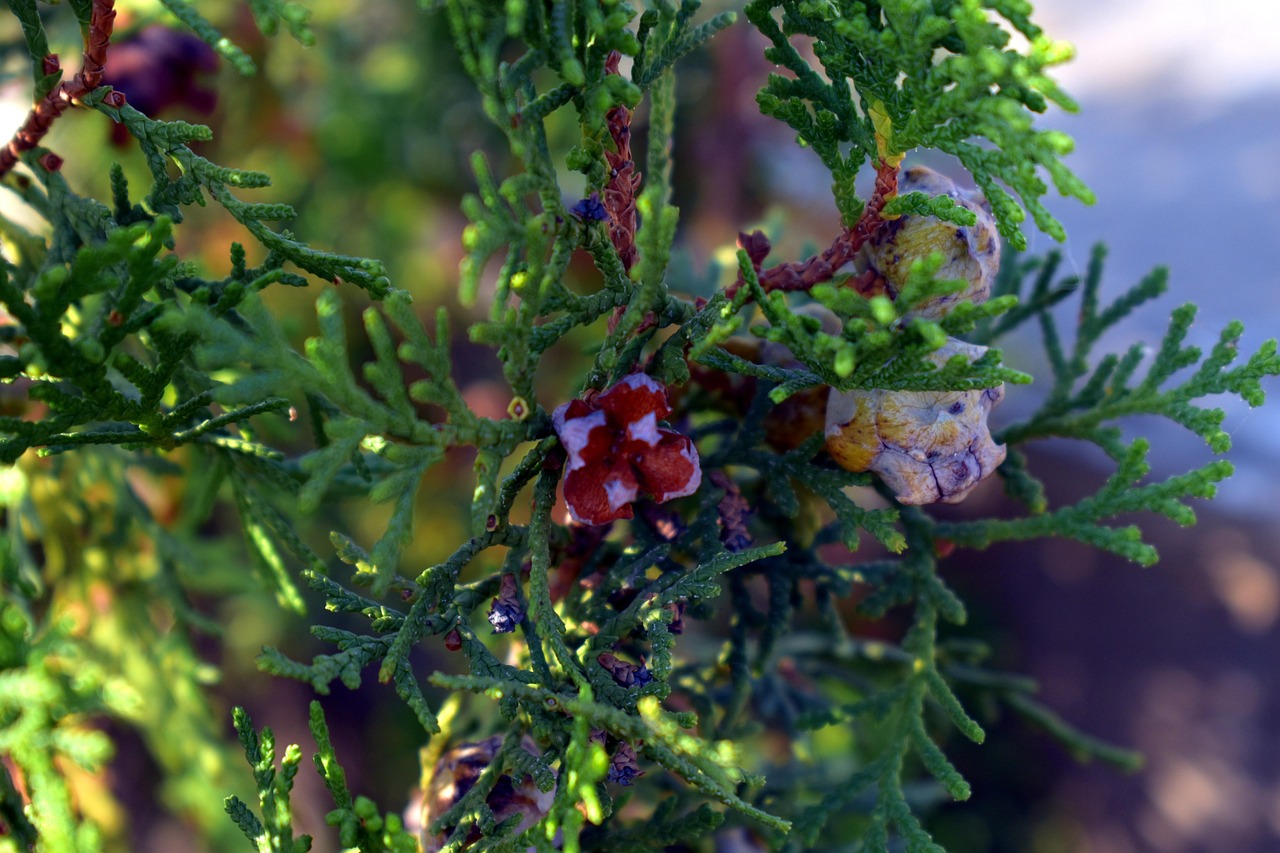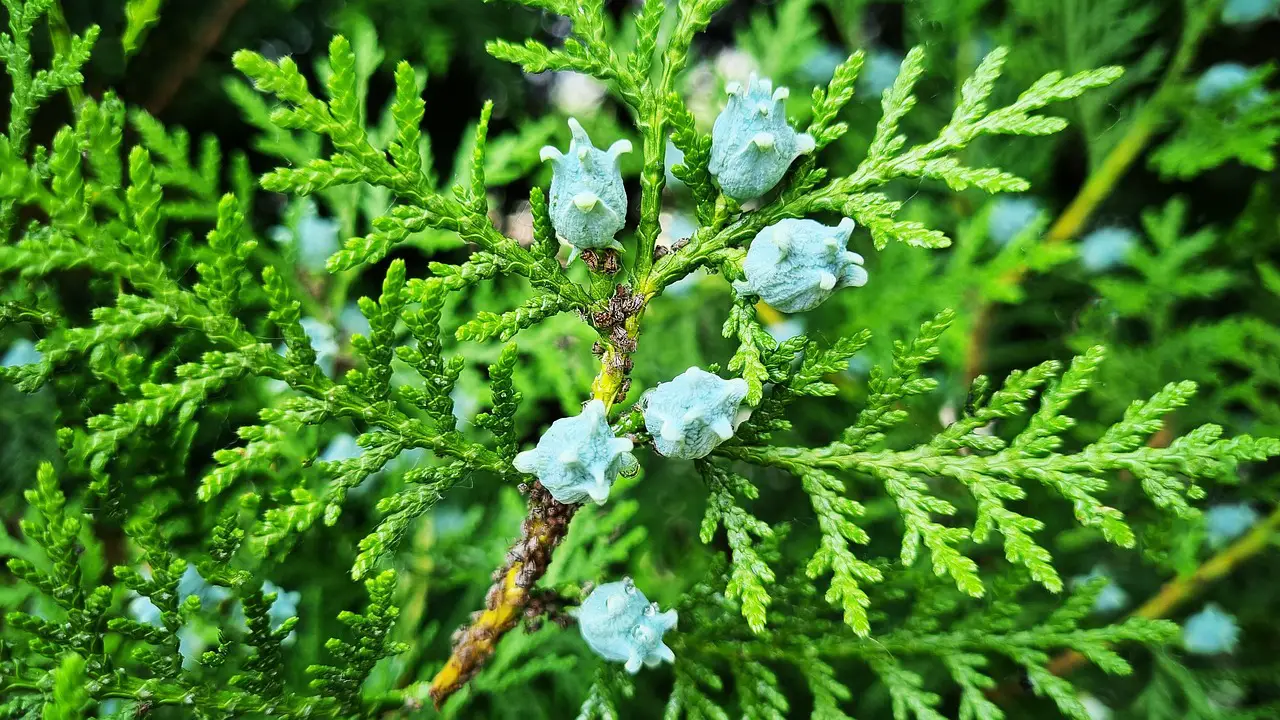Arborvitae trees offer numerous benefits such as privacy, low maintenance, and year-round greenery. However, they also have drawbacks, including susceptibility to pests and limited soil adaptability. Understanding these pros and cons is essential for gardeners considering adding arborvitae to their landscapes.
Arborvitae, belonging to the genus Thuja, are popular evergreen trees widely used in landscaping. They are often chosen for their dense foliage and ability to provide privacy and windbreaks. With their attractive green color, arborvitae can enhance the aesthetic appeal of any garden or yard. Many gardeners appreciate their low maintenance requirements, making them an excellent choice for both novice and experienced gardeners. However, like any plant, arborvitae come with their own set of advantages and disadvantages that gardeners should carefully consider.

This guide will delve into the various pros and cons associated with arborvitae. Understanding these factors can help you decide whether arborvitae is the right choice for your garden or landscape design.
Pros of Arborvitae
There are several compelling reasons to consider planting arborvitae in your garden. Below are some of the main advantages:
- Privacy Screening: Arborvitae can grow tall and dense, making them ideal for creating natural privacy screens or hedges.
- Year-Round Greenery: These trees maintain their vibrant color throughout all seasons, providing continuous visual interest.
- Low Maintenance: Once established, arborvitae require minimal care, making them suitable for busy gardeners.
- Pest Resistance: Many species of arborvitae are resistant to common pests, reducing the need for chemical treatments.
- Versatile Use: Arborvitae can be used in various landscaping designs, including borders, foundations, or as specimen trees.
Cons of Arborvitae
While there are many benefits to planting arborvitae, there are also some drawbacks to consider. Here are some common disadvantages:

- Pest Susceptibility: Despite being generally pest-resistant, arborvitae can still be affected by specific pests such as bagworms and spider mites.
- Soil Limitations: Arborvitae prefer well-drained soil and may not thrive in overly wet or poorly drained conditions.
- Size Management: Some varieties can grow quite large, which may not be suitable for smaller gardens without proper management.
- Fungal Issues: They may be prone to fungal diseases in humid conditions, leading to yellowing or dieback of foliage.
- Limited Color Variety: While green is a staple color, the variety in foliage color is more limited compared to other ornamental plants.
Before planting arborvitae, it is essential to assess your garden’s conditions. Understanding local climate, soil type, and available space will help determine if arborvitae will thrive in your landscape. In regions with extreme weather conditions or specific soil challenges, alternative plants may be more appropriate.
When choosing the right type of arborvitae for your garden, consider the variety available. Some popular types include:
| Variety | Height | Spread</th | Special Features |
|---|---|---|---|
| Green Giant | 50-60 feet | 12-20 feet | Fast-growing and drought-resistant. |
| Smaragd (Emerald Green) | 12-15 feet | 3-4 feet | Narrow form; ideal for small spaces. |
| Techny Arborvitae | 10-15 feet | 4-6 feet | Dense foliage; good for privacy screens. |
| Western Red Cedar | 50-70 feet | 20-30 feet | Aromatic wood; natural pest resistance. |
Selecting the right variety based on your landscape needs and conditions will play a crucial role in the success of your arborvitae planting. By carefully weighing the pros and cons, you can make an informed decision that enhances your garden’s beauty while serving your objectives effectively.

Planting and Care for Arborvitae
Successfully growing arborvitae requires careful planning and attention to detail. Understanding their planting requirements, care needs, and potential challenges will help ensure your trees thrive in your garden. Below, we will explore the best practices for planting and maintaining arborvitae.
Choosing the Right Location
Selecting an appropriate location is crucial for the health of your arborvitae. Consider the following factors when choosing a spot:
- Sunlight: Arborvitae thrive in full sun to partial shade. Aim for at least six hours of direct sunlight each day.
- Soil Quality: Well-drained soil is essential. Avoid areas where water tends to pool after heavy rain.
- Space: Ensure there is enough space between trees to allow for their mature size. This prevents overcrowding and ensures adequate airflow.
Soil Preparation
Before planting, it is vital to prepare the soil properly. Here are steps to follow:

- Test Soil pH: Arborvitae prefer slightly acidic to neutral soil (pH 6.0 to 7.0). You can test this using a soil pH kit.
- Add Organic Matter: Incorporate organic compost or well-rotted manure into the planting area to improve soil quality.
- Tilling: Loosen the soil to a depth of about 12 inches. This encourages root growth and enhances drainage.
Planting Arborvitae
When you’re ready to plant, follow these steps for optimal results:
- Digging the Hole: Create a hole twice as wide as the root ball but no deeper than the root ball itself. This allows roots to spread easily.
- Positioning the Tree: Place the arborvitae in the center of the hole, ensuring that the top of the root ball is level with the surrounding soil.
- Backfill and Water: Fill in the hole with soil, gently packing it down. Water thoroughly after planting to eliminate air pockets.
Watering and Fertilization
Proper watering and fertilization are essential for healthy arborvitae growth. Here are some guidelines:
Watering Schedule
Newly planted arborvitae require regular watering until established. Follow these tips:
- Frequency: Water deeply once a week, or more often during dry spells, especially in the first year.
- Moisture Level: Ensure that the top 2-3 inches of soil remain moist but not soggy.
- Mulching: Apply a layer of organic mulch around the base to help retain moisture and suppress weeds.
Fertilization Needs
Fertilization can promote healthy growth, particularly in younger trees. Consider these points:
- Timing: Apply fertilizer in early spring before new growth begins.
- Type of Fertilizer: Use a slow-release, balanced fertilizer with equal ratios of nitrogen, phosphorus, and potassium.
- Application Rate: Follow the manufacturer’s instructions for application rates based on your tree’s size and age.
Pest and Disease Management
While arborvitae are relatively hardy, they can still be susceptible to certain pests and diseases. Awareness and proactive management can help keep your trees healthy.
Pests to Watch For
The following pests can affect arborvitae, along with their signs:
- Bagworms: Look for web-like bags on branches. These can defoliate trees if not controlled.
- Spider Mites: Fine webbing on branches is a sign of infestation. Yellowing foliage may also occur.
- Aphids: These small insects can cluster on new growth, causing distortion and yellowing leaves.
Disease Prevention
Diseases such as root rot or fungal infections can impact arborvitae health. Preventive measures include:
- Adequate Spacing: Ensure good airflow between trees to reduce humidity and disease risk.
- Avoid Overwatering: Prevent waterlogged soil to minimize root rot risk.
- Pesticide Use: Consider using organic pesticides if pests become a significant issue. Always follow application guidelines carefully.
Caring for your arborvitae involves understanding their specific needs and challenges. With proper planting, watering, fertilization, and pest management, you can enjoy healthy, vibrant trees in your landscape for years to come.
Pruning and Shaping Arborvitae
Pruning and shaping arborvitae is an essential part of maintaining their health and appearance. Proper pruning techniques can encourage dense growth and prevent disease. Understanding when and how to prune will help you achieve the desired shape and size for your trees.
When to Prune
The timing of pruning is crucial for the health of your arborvitae. Here are some guidelines:
- Early Spring: Pruning during early spring, just before new growth begins, is ideal. This timing allows you to shape the tree while minimizing stress.
- Late Summer: Light pruning can also be done in late summer. Avoid heavy pruning at this time, as it can encourage new growth that may not harden off before winter.
- Avoid Fall Pruning: Pruning in the fall is not recommended, as it can leave the trees vulnerable to winter damage.
Pruning Techniques
Different techniques can be employed to achieve effective pruning and shaping of arborvitae:
- Thinning: Remove some of the inner branches to improve air circulation. This helps prevent diseases and encourages healthy growth.
- Shearing: For a more formal look, shearing the tops and sides can create a dense, compact shape. Use sharp hedge trimmers for a clean cut.
- Selective Pruning: Focus on removing dead or diseased branches. This technique promotes overall health without drastically altering the tree’s shape.
- Cutting Back: When necessary, cut back branches to promote denser growth. Aim to cut back to a lateral branch or bud.
Common Arborvitae Varieties and Their Uses
Selecting the right variety of arborvitae for your landscape depends on your specific needs, such as height, width, and growing conditions. Below are some popular varieties and their typical uses:
| Variety | Height | Spread | Best Uses |
|---|---|---|---|
| Green Giant | 50-60 feet | 12-20 feet | Fast-growing for privacy screens and windbreaks. |
| Smaragd (Emerald Green) | 12-15 feet | 3-4 feet | Ideal for narrow spaces or formal hedges. |
| Techny Arborvitae | 10-15 feet | 4-6 feet | Great for dense privacy hedges and backdrops. |
| Western Red Cedar | 50-70 feet | 20-30 feet | Aromatic wood; used as a specimen tree or for timber. |
Selecting the Right Variety
Your choice of arborvitae variety should align with your garden’s aesthetics and functional needs. Consider the following factors:
- Height Requirements: Determine how tall you need the trees to grow based on their intended use, such as privacy or windbreaks.
- Space Availability: Ensure that there is enough space for the spread of the trees to avoid overcrowding.
- Aesthetic Preferences: Choose a variety that complements your landscape design, whether you prefer a more formal or natural look.
Seasonal Care for Arborvitae
The care requirements for arborvitae may vary with the seasons. Understanding these seasonal needs can help keep your trees healthy throughout the year.
Spring Care
As spring arrives, consider these care tips:
- Fertilization: Apply a balanced fertilizer if you didn’t fertilize in early spring.
- Pest Inspection: Check for any signs of pests or diseases as new growth appears.
- Irrigation: Ensure consistent watering, especially during dry spells.
Summer Care
The summer months can be hot, necessitating special attention:
- Mulching: Apply mulch around the base to retain moisture and regulate soil temperature.
- Watering Needs: Monitor soil moisture levels, particularly during heatwaves. Deep watering may be necessary.
- Pest Control: Remain vigilant against pests like bagworms and spider mites; treat infestations promptly.
Fall Care
The fall season brings its own set of tasks:
- Pruning: Light pruning can be done to shape trees before winter.
- Irrigation Adjustments: Reduce watering as temperatures drop but maintain soil moisture.
- Winter Preparation: Consider using anti-desiccant sprays on foliage to prevent winter burn.
Winter Care
Caring for arborvitae in winter is essential to protect them from harsh conditions:
- Shelter from Snow: If heavy snowfall accumulates, gently brush off snow from branches to prevent breakage.
- Ice Management: Avoid using salt near roots as it can harm the trees.
- Check for Damage: Inspect trees periodically for signs of damage from ice or wind.
Caring for arborvitae through all four seasons ensures they remain healthy and vibrant. Understanding their specific needs at different times of the year will help you maintain their beauty and functionality in your landscape.
Additional Considerations for Arborvitae Care
In addition to the basic care practices discussed, there are several more considerations that can enhance the growth and longevity of arborvitae. These tips can help you maximize the benefits of these trees in your landscape.
Companion Planting
Companion planting can improve the health and aesthetics of your garden. Consider the following options when planting arborvitae:
- Flowering Plants: Pairing arborvitae with flowering plants can create visual interest. Consider perennials like echinacea or daylilies.
- Ground Covers: Low-growing ground covers such as creeping thyme or sedum can complement the vertical height of arborvitae while reducing weed growth.
- Deciduous Shrubs: Mixing arborvitae with deciduous shrubs can provide seasonal variety and enhance biodiversity in your garden.
Environmental Factors
Understanding the environmental factors that affect arborvitae can help you make better care decisions:
- Climate: Arborvitae generally prefer temperate climates. In areas with extreme temperatures, consider selecting varieties that are more heat or cold tolerant.
- Soil Type: Conduct a soil test to determine nutrient levels and pH. Adjustments can be made to ensure optimal growing conditions.
- Wind Exposure: In windy areas, planting arborvitae as a windbreak can protect other plants and improve overall garden health.
Using Arborvitae in Landscape Design
Arborvitae can be incorporated into various landscape designs effectively. Here are some ideas:
- Privacy Hedges: Planting arborvitae in rows can create effective privacy screens, ideal for backyards and patios.
- Foundation Plantings: Use shorter varieties to frame the foundation of your home, adding structure and greenery to your landscape.
- Specimen Trees: Select larger varieties as standout features in gardens or yards, drawing attention to their shape and color.
- Windbreaks: Plant arborvitae on the edges of properties to reduce wind exposure for other plants and structures.
Final Thoughts
Arborvitae trees present a multitude of benefits for gardeners, including privacy, aesthetics, and ease of care. However, they also come with challenges that must be managed, such as susceptibility to pests and specific environmental needs. By understanding both the pros and cons, as well as taking into account planting, care, and design considerations, you can make informed decisions that will ensure the successful integration of arborvitae into your landscape.
The key to thriving arborvitae is proactive care throughout the seasons. Regular monitoring for pests, adjusting watering schedules, and proper pruning will help maintain their health and beauty. Additionally, understanding how to leverage companion planting and landscape design principles will enhance the role of arborvitae within your garden.
Ultimately, whether you are looking to create a lush privacy screen, a decorative focal point, or a sustainable windbreak, arborvitae can be a valuable asset in your gardening toolkit. With careful planning and attention, these trees can thrive and provide enjoyment for many years to come.
